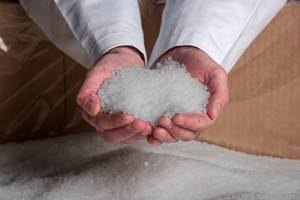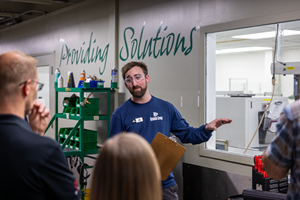Existing Homeowners Driving Appliance Market
Construction of new homes is limited, but current homeowners are driving demand for appliances.
The limited construction of new homes may tamp demand for appliances going into new homes, but these same conditions may entice current homeowners to upgrade their appliances and home furnishings.
Those who watched the news about the housing market in 2018 have heard a lot of lackluster reports. Several stock indexes that track the housing sector, such as the iShares U.S. Home Construction ETF (ITB) and SPDR S&P Homebuilders ETF (XHB), have both fallen more than 30% between their first-quarter 2018 highs and their valuations as this article went to press. Equities analysts in this sector see unaffordable home prices, rising costs for home-building materials, and rising interest rates as three of the most significant factors restricting greater growth in the market. But when we see price as merely the tool that balances supply with demand, and if we think about how limited supplies and strong demand can influence prices, then the market picture looks significantly different.
On the supply side, U.S. new housing permits during the first three quarters of 2018 averaged 111,000 units monthly, the highest level since 2007 and more than double the 2009 average. According to Realtor.com, the average U.S. home in September was on the market for 65 days, down 6% year-over-year, while prices are up 7% during the same time. However, in many non-rural markets the median days on market have been far shorter while median home prices have grown much faster. This data, combined with the well-known fact that manufacturing and construction labor is in extremely short supply, is one of the greatest reasons that the volume of new homes being constructed is not higher.
This leaves us with a market in which people can easily sell their home but struggle to find another. This would indicate that the market is not weak, but rather significantly underserved. This has two major implications for appliances. First, the limited construction of new home builds will dampen demand for appliances going into new homes. On the other hand, these same conditions may entice current homeowners to upgrade their appliances and home furnishings, knowing that they will be in their current home longer than they may have previously anticipated. A strong labor market and increasing wage growth are two significant factors that will help support home improvements. In fact, data indicates that U.S. inflation-adjusted residential fixed investment in home improvements has increased drastically in the last four years ending in 2017, growing more than 30%.
Financial data from publicly traded firms in the home-furnishings and fixtures market— as opposed to data from the housing construction market—supports this underlying macroeconomic picture. Real revenue growth—calculated using a 12/12 rate of change at 4.7%—is slightly greater than the overall national growth rate. Furthermore, since early 2017 the home-furnishings and fixtures market has seen capital-expenditures growth of over 10% on a TTM (trailing 12 months) basis, suggesting that the industry is seeking new ways to use technology to solve its labor shortage, which is one of its fundamental constraints on increased new-home construction. Overall, the appliance market must realize that a more sophisticated understanding of the housing market is needed to truly understand the underlying value in the appliance space.
ABOUT THE AUTHOR: Michael Guckes is the chief economist for Gardner Business Intelligence, a division of Gardner Business Media, Cincinnati. He has performed economic analysis, modeling and forecasting work for nearly 20 years among a wide range of industries. Michael received his BA in political science and economics from Kenyon College and his MBA from The Ohio State University. mguckes@gardnerweb.com.
Related Content
‘Monomaterial’ Trend in Packaging and Beyond Will Only Thrive
In terms of sustainability measures, monomaterial structures are already making good headway and will evolve even further.
Read MoreMedical Molder, Moldmaker Embraces Continuous Improvement
True to the adjective in its name, Dynamic Group has been characterized by constant change, activity and progress over its nearly five decades as a medical molder and moldmaker.
Read MoreLatest Data on Bottled Water Shows Continued Strong Growth
Bottled water’s volume surpassed soft drinks for the first time in 2016 and has done so every year since.
Read MoreImpacts of Auto’s Switch to Sustainability
Of all the trends you can see at NPE2024, this one is BIG. Not only is the auto industry transitioning to electrification but there are concerted efforts to modify the materials used, especially polymers, for interior applications.
Read MoreRead Next
Making the Circular Economy a Reality
Driven by brand owner demands and new worldwide legislation, the entire supply chain is working toward the shift to circularity, with some evidence the circular economy has already begun.
Read MorePeople 4.0 – How to Get Buy-In from Your Staff for Industry 4.0 Systems
Implementing a production monitoring system as the foundation of a ‘smart factory’ is about integrating people with new technology as much as it is about integrating machines and computers. Here are tips from a company that has gone through the process.
Read MoreLead the Conversation, Change the Conversation
Coverage of single-use plastics can be both misleading and demoralizing. Here are 10 tips for changing the perception of the plastics industry at your company and in your community.
Read More
.jpg;width=70;height=70;mode=crop)






















